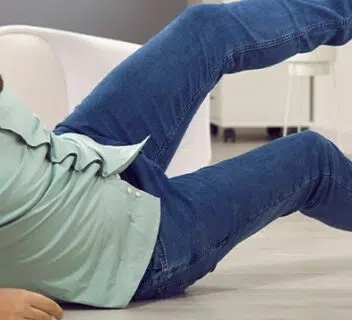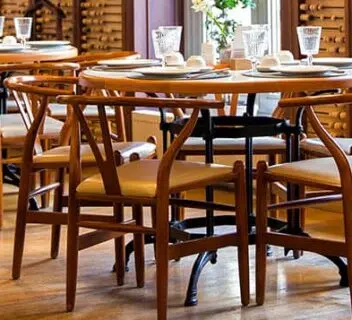What Is the Average Payout for Slip and Fall Injury Cases?
If you’re wondering about the Average Payout for Slip and Fall Injury, there’s no definitive “this is it” answer. That’s because settlements are private, and the data isn’t available to the general public. That being said, as a general rule, you can expect between a few thousand to up to hundreds of thousands of dollars, depending on your case (and if you have a “winning” claim). Particularly severe cases can pay even more, sometimes reaching millions. This article will guide you through the factors that influence these amounts.
Key Takeaways
- Average payout for slip and fall injury settlement amounts range quite a bit, influenced by injury severity, property owner negligence, and jurisdiction.
- The severity of injuries, establishing liability, and jurisdictional laws crucially affect compensation, with clear proof of negligence required for higher settlements.
- Hiring an experienced personal injury attorney significantly increases the likelihood of securing fair compensation, as they navigate legal complexities and negotiate with insurance companies.
Understanding Average Payout for Slip and Fall Injury Settlement Amounts
Slip and fall settlements can vary widely based on several factors. The typical settlement for such incidents is influenced by the severity of the injuries and the degree of negligence involved. However, in cases of severe injuries, settlements can significantly exceed normal expectations, potentially reaching into the millions. Determining the final settlement amount in slip and fall cases involves many factors. This complexity makes the process challenging.
There’s no “one-size-fits-all” answer when it comes to slip and fall settlements. Each slip and fall settlement amount is influenced by the specifics of the case, including the nature of the accident, the injuries sustained, and how the fall settlement depends on the legal environment.
Various elements can affect your settlement, which will be discussed in detail in the following sections.
Key Factors Influencing Average Payout for Slip and Fall Injury Settlements
Key factors influence slip and fall settlements, which are crucial for anyone pursuing a claim. Primary factors include injury severity, property owner liability and negligence, and jurisdictional differences. Each element plays a significant role in determining compensation.
Injury severity directly impacts settlement value; more severe injuries typically lead to higher compensation. Proving that the property owner failed to maintain a safe environment significantly affects the outcome. Additionally, jurisdictional differences, including state laws and statutes of limitations, can greatly impact the viability and value of slip and fall claims.
Injury Severity and Medical Expenses
The severity of the injury sustained in a slip and fall accident has a direct impact on the value of the settlement. Higher compensation for severe injuries is common during settlement negotiations. Types of serious injuries that typically lead to higher compensation include fall injuries:
- Traumatic brain injuries
- Spinal cord injuries
- Multiple fractures
- Broken bones. Medical expenses are significant, especially for serious injuries requiring long-term care. Long-term medical needs related to serious injuries can elevate the expected settlement amount.
An attorney can determine the value of medical costs by reviewing bills, prescriptions, medical records, and doctors’ reports. They can also assess potential future impacts by reviewing injury diagnosis and medical records. This comprehensive approach ensures that all medical expenses are accounted for, maximizing the potential settlement.
Liability and Negligence
In a slip and fall case, liability usually falls on the property owner, who must maintain a safe environment. A skilled attorney can help establish liability by demonstrating that property owners failed to meet their duty of care due to the property owners’ negligence. To prove negligence, evidence such as photographs of the hazard and witness statements is required. The legal status of the injured party (invitee, licensee, or trespasser) influences the level of care owed by property owners in a premises liability claim, including premises liability considerations.
Comparative negligence laws reduce the settlement by the percentage of fault attributable to the injured party and the at fault party. Insurance companies may argue that the victim’s negligence contributed to the injury, lowering settlement amounts.
Clear liability laws and proven negligence are essential for securing fair compensation in slip and fall cases.
Jurisdictional Differences
State laws, including statutes of limitations and negligence rules, can greatly impact the viability and value of slip and fall claims. In Arizona, for example, comparative negligence reduces the settlement by the percentage of your fault.
Jurisdictional differences mean the same slip and fall incident could result in varying settlement amounts depending on location, making it essential to understand the specific laws that apply.
Types of Damages You Can Claim in a Slip and Fall Case
In a slip and fall case, victims can claim various types of damages to compensate for their losses. The two main categories are economic and non-economic damages. Economic damages typically include losses such as medical expenses, lost wages, and any out-of-pocket costs incurred due to the accident. Non-economic damages cover more subjective losses, such as pain and suffering, emotional distress, and loss of enjoyment of life.
Documenting economic and non-economic damages is crucial for building a strong case. Accurate documentation helps calculate total compensation, ensuring all aspects of suffering and financial loss are accounted for.
Each type of damage and its impact on the overall settlement will be discussed.
Economic Damages
Economic damages typically include medical expenses, lost wages, and any out-of-pocket costs incurred due to the accident. Victims can claim various non-surgical medical expenses, including physical therapy, imaging, medication, and doctor visits. Economic losses, such as medical expenses and lost wages, significantly influence slip and fall settlements.
Lawyers gather evidence such as medical bills and rehabilitation costs to support claims for medical expenses. Lost income due to time away from work qualifies as a compensable economic damage in slip and fall cases. Factors influencing compensation for lost future earnings include the ability to return to work, the type of work, and age.
Attorneys calculate lost wages and compensation as follows:
- Use pay stubs to determine daily wages.
- Multiply daily wages by the number of missed workdays.
- Seek compensation for past, present, and future income losses due to a slip and fall injury.
- Include out-of-pocket expenses for assistance with activities such as lawn and home care in settlement negotiations.
Non-Economic Damages
Non-economic damages include pain and suffering damages, emotional distress, loss of enjoyment of life, and loss of consortium. These damages are subjective, referring to indirect damages like mental anguish, scarring, and loss of enjoyment of life. Non-economic damages are typically calculated by multiplying economic damages by a factor between 1.5 and 5 or by using a per-diem method.
The amount received for pain and suffering is influenced by factors unique to each case, such as injury severity and jurisdiction. How much compensation is awarded for more severe injuries tends to lead to higher awards for pain and suffering.
Compensation may cover emotional suffering and loss of quality of life, and individuals may seek to recover compensation for these damages.
Steps to Take After a Slip and Fall Accident
After a slip and fall accident, quick and strategic actions are necessary to protect your legal rights. Immediate actions after the accident are crucial to ensure full compensation. Building a strong case requires gathering substantial evidence early, such as incident reports and witness statements.
The important steps to take immediately following an accident to maximize your chances of a successful slip and fall claim are outlined below. From seeking medical treatment to gathering evidence and notifying the property owner, these steps are vital for building a strong case.
Seek Medical Treatment Immediately
Seeing a doctor immediately after a slip and fall accident is crucial. Individuals should prioritize immediate medical assistance after the incident. Immediate medical treatment starts with documenting your injury and its severity. This documentation is essential for proving that the injuries sustained were a direct result of the slip and fall accident.
Medical evaluation can reveal injuries that may not be visible right away. Prompt medical attention establishes a direct link between the accident and your injuries. This step ensures that all medical expenses are covered in the settlement.
Gather Evidence at the Scene
Gathering evidence at the scene is vital for establishing negligence. Attorneys conduct thorough investigations, including collecting witness statements and photographic evidence. Photographs of the accident scene serve as critical evidence in your claim. Photographs help preserve crucial details that support your claim. Failing to document the accident and injuries immediately can weaken your claim.
Gathering as much evidence as possible at the scene is crucial for seeking justice. Witness statements, incident reports, and other forms of evidence significantly strengthen your case. This proactive approach is essential for building a compelling slip and fall claim.
Notify the Property Owner
Notifying the property owner about a slip and fall accident establishes an official record. The person in charge, such as a store manager or landlord, should be notified after a slip and fall.
Creating an official record with the property owner strengthens your claim and assists in legal processes.
How to Maximize Your Slip and Fall Settlement
Maximizing your slip and fall settlement requires a strategic approach: documenting injuries and expenses, hiring an experienced personal injury attorney, and avoiding common mistakes. A skilled lawyer can increase the value of your personal injury claim through strategy. They inform you about claimable damages and fight for financial coverage.
Out-of-pocket costs can help determine the worth of a slip and fall claim. Future medical needs, pain and suffering, and other compensation can increase the value of a slip and fall injury claim.
Successful settlement negotiation often depends on convincing the other party of a strong chance of succeeding at trial.
Documenting Injuries and Expenses
Immediate medical attention is important because:
- It establishes the link between your injuries and the accident.
- Medical evaluation can reveal injuries that may not be visible right away.
- Prompt medical attention establishes a direct link between the accident and your injuries.
Additionally, precise documentation of all expenses, including ongoing medical costs, is essential for supporting a claim.
Transportation costs related to medical appointments can be included in compensation. Creating an official report of the incident establishes a record beneficial for your legal case. Prompt documentation of the accident significantly strengthens your claim.
Notifying the property owner creates an official account of the incident, vital for future claims. Documenting details of your interaction with the property owner is important.
Hiring an Experienced Personal Injury Attorney
Attorneys play a critical role in the outcome of slip and fall cases, influencing settlement amounts. Their contributions include:
- Negotiating with insurance companies to advocate for fair compensation.
- Enhancing your ability to negotiate effectively through their experience.
- Providing a free consultation to estimate the strength of a slip and fall case.
Clients typically receive a free consultation to evaluate their case before hiring an attorney. Attorneys gather proof and build a strong case to establish negligence.
Attorneys gather evidence and negotiate with insurance providers for slip and fall cases. Most personal injury lawyers work on a contingency fee basis, meaning clients pay only if they win their case.
Contact 1-800-THE-LAW2 today for a free consultation with a personal injury lawyer in our network.
Avoiding Common Mistakes
Gathering compelling evidence, like medical records and witness statements, is crucial; failing to collect this information can significantly reduce potential compensation. Insurance companies often deploy tactics to dispute claims and minimize compensation.
If a plaintiff is found partially at fault for their slip and fall incident, their compensation may be reduced. Avoiding common mistakes in slip and fall claims is essential for securing fair compensation in a slip and fall lawsuit.
Examples of Slip and Fall Settlements
Every slip and fall case is unique, leading to varying settlement amounts based on individual circumstances. Real-life examples illustrate the range of settlement amounts, helping you understand what to expect in different scenarios.
These examples highlight how circumstances, the level of negligence, and injury severity can significantly impact the value of slip and fall settlements. By examining these cases, you can gain a clearer picture of the potential outcomes for your own situation.
High-Value Settlements
High-value settlements for slip and fall cases typically involve severe injuries or clear liability, leading to substantial compensation for victims in a fall lawsuit payout. Examples include:
- A woman received $10 million after slipping on a wet floor in a grocery store, leading to serious injuries.
- An $18 million award was given to a victim who fell from defective scaffolding, suffering multiple severe injuries.
- A $13 million settlement was reached in another high-value case.
These high-value settlements exemplify the significant impact that severe injuries and clear liability can have on the compensation amounts. They serve as a benchmark for understanding the potential upper limits of slip and fall settlements.
Mid-Range Settlements
Mid-range settlements in slip and fall cases typically involve injuries that are moderate in severity and compensation amounts. One example is a customer who settled for $160,000 after tripping over a misplaced floor mat and suffering wrist fractures. Another case involved a $225,000 settlement after a customer fell in a restaurant due to lack of floor maintenance.
These mid-range settlements reflect the impact of moderate injuries and circumstances leading to liability in slip and fall cases, including soft tissue injuries. They provide insight into what victims with less severe, but still significant, injuries might expect.
Lower End Settlements
Lower end settlements in slip and fall cases often occur due to minor injuries or shared liability. Payouts in the tens of thousands of dollars are common for cases involving minor injuries with shared liability, like slipping on a wet floor.
These lower-end settlements demonstrate the reduced compensation amounts typically associated with minor injuries or shared liability. They highlight the importance of establishing clear liability and the severity of injuries for higher average settlement amounts.
How Long Does It Take to Settle a Slip and Fall Case?
Typically, a slip and fall settlement can be resolved in 5 to 7 months, but it may extend up to 2 years if litigation is involved. Some cases can be settled extremely fast, however, depending on the hostility of the defendant and/or their willingness to offer a favorable settlement amount early. If a fair settlement isn’t offered or if liability is unclear, a court case may be necessary, affecting the overall timeline.
Most slip and fall claims are settled outside of court, which can speed up the resolution process. In the event of a dispute, an attorney will represent the victim in court, managing all necessary legal procedures. Most slip and fall injury lawsuits end in a settlement compromise, with estimates suggesting that 95 percent or more of injury disputes are resolved through settlement.
Why Legal Representation Matters in Slip and Fall Cases
Hiring a skilled personal injury attorney increases the chances of securing a fair settlement for slip and fall victims. Experienced slip and fall attorneys provide essential services such as evidence gathering and negotiation with insurance companies, which are vital for the case’s success. Without legal representation, insurance companies may undervalue or deny claims, significantly reducing compensation for victims. A fall injury lawyer can help navigate these challenges effectively in a personal injury lawsuit.
Legal representation has proven to secure higher settlements and better outcomes for victims of slip and fall accidents. Engaging an experienced attorney ensures that you have a strong advocate fighting for your rights and maximizing your chances of receiving the compensation you deserve.
Summary
Understanding the average slip and fall settlement is crucial for anyone navigating a personal injury claim. This guide has highlighted the key factors influencing settlement amounts, the types of damages you can claim, and the steps to take immediately after an accident. We’ve also provided examples of real-life settlements to give you a clearer picture of potential outcomes.
If you’ve been involved in a slip and fall accident, remember to act quickly, document everything, and seek the assistance of an experienced personal injury attorney. With the right approach and legal support, you can maximize your chances of securing a fair settlement and moving forward with your life.
Frequently Asked Questions
The settlement amount in a slip and fall case is primarily influenced by the severity of the injuries, the degree of liability and negligence involved, and varying jurisdictional laws. Understanding these factors can help in anticipating potential outcomes.
Economic damages in a slip and fall case are calculated by totaling medical expenses, lost wages, and out-of-pocket costs, supported by evidence such as medical bills and pay stubs. This systematic approach ensures that all financial losses are accounted for in the compensation claim.
After a slip and fall accident, it’s crucial to seek medical treatment right away, collect evidence at the scene, and inform the property owner to ensure an official record of the incident is created.
Typically, a slip and fall case takes months to settle, but it can take up to 2 years if litigation occurs. Settling outside of court generally expedites the process.
Legal representation is crucial in slip and fall cases as it significantly enhances the likelihood of obtaining a fair settlement through expert evidence gathering and effective negotiation with insurance companies. Without a skilled attorney, you may struggle to navigate complex legal processes and advocate for your rights effectively.




